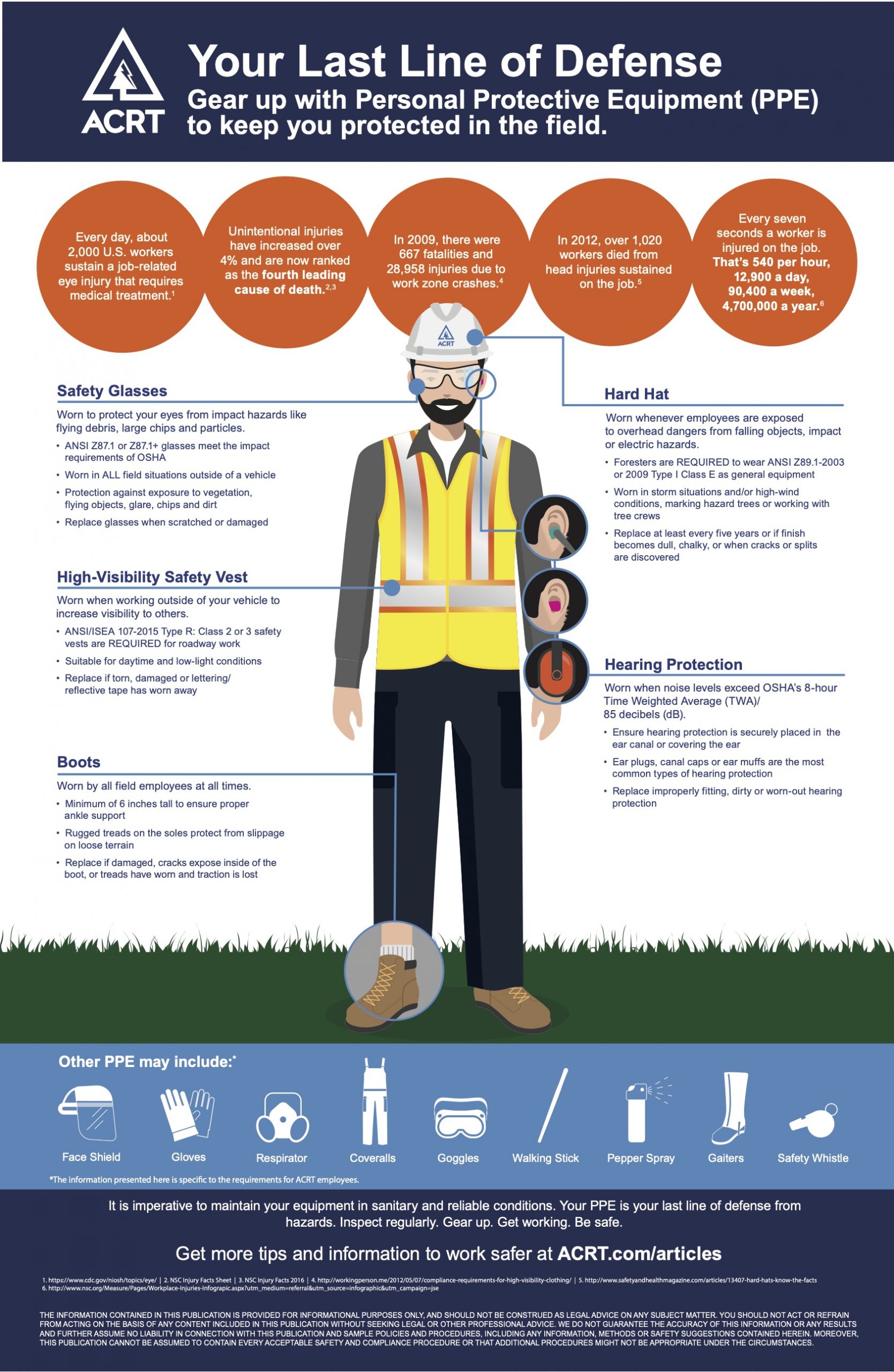Your Last Line of Defense: Gear up with Personal Protective Equipment (PPE) to keep you protected in the field.
Startling Stats
- Every day, about 2,000 U.S. workers sustain a job-related eye injury that requires medical treatment. [1]
- Unintentional injuries have increased over 4% and are now ranked as the fourth leading cause of death. [2]
- In 2009, there were 667 fatalities and 28,958 injuries due to work zone crashes. [3]
- In 2012, over 1,020 workers died from head injuries sustained on the job. [4]
- Every seven seconds a worker is injured on the job. That’s 540 per hour, 12,900 a day, 90,400 a week, 4,700,000 a year. [5]
It is imperative to maintain your equipment in sanitary and reliable conditions. Your PPE is your last line of defense from hazards. Inspect regularly. Gear up. Get working. Be safe.
![Personal Protective Equipment [Infographic]](https://acrt.com/wp-content/uploads/2017/10/personal-protective-equipment.jpg)
